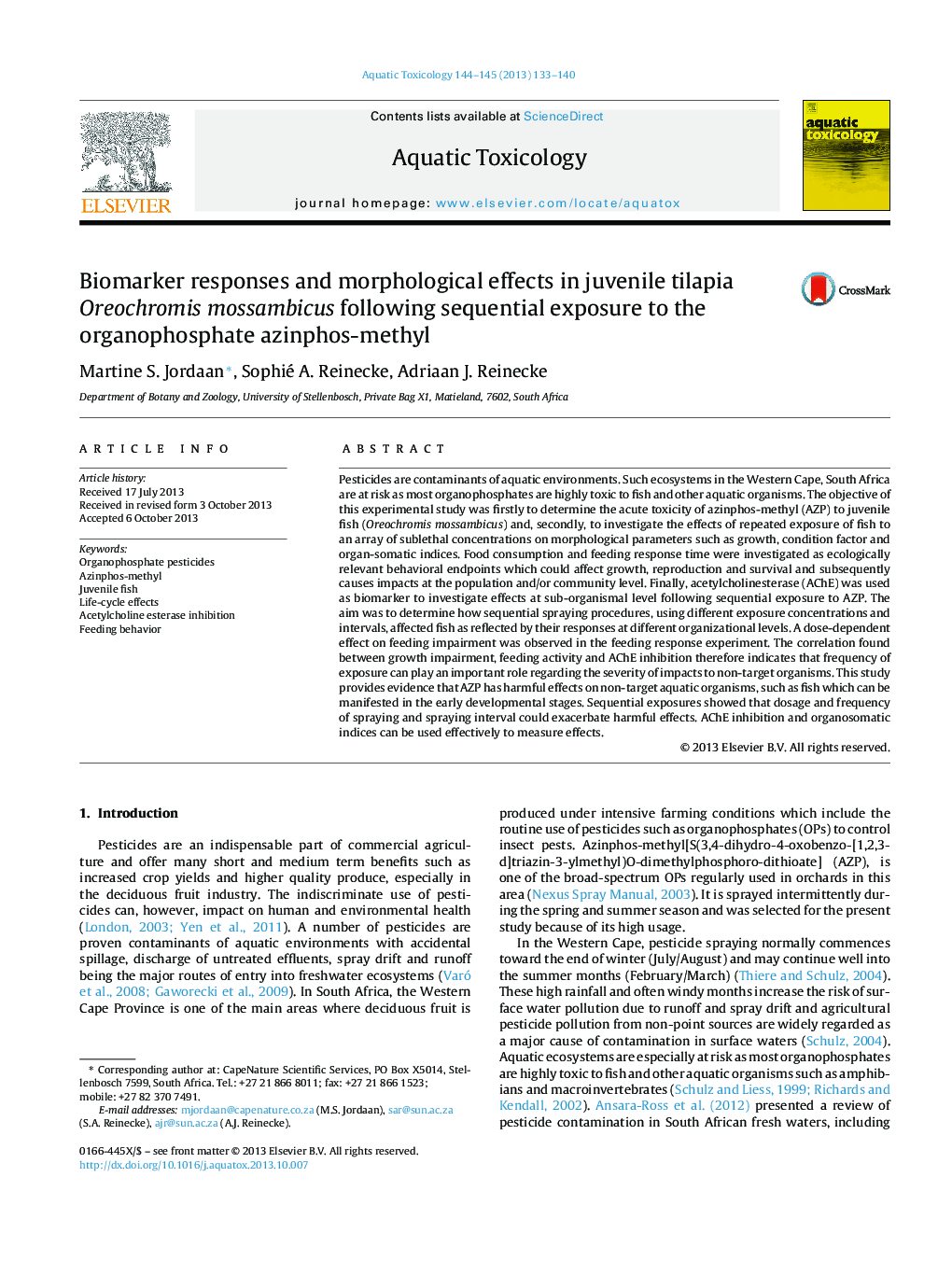| کد مقاله | کد نشریه | سال انتشار | مقاله انگلیسی | نسخه تمام متن |
|---|---|---|---|---|
| 4529344 | 1625960 | 2013 | 8 صفحه PDF | دانلود رایگان |

• Acute toxicity of azinphos-methyl to juvenile tilapia was determined.
• Effects of various exposure regimes at different organizational levels were studied.
• Effects were observed for biomarkers, morphological effects and feeding behavior.
• Exposure interval played a more important role than concentration in inducing effects.
• Links were observed between biomarkers, feeding behavior and growth parameters.
Pesticides are contaminants of aquatic environments. Such ecosystems in the Western Cape, South Africa are at risk as most organophosphates are highly toxic to fish and other aquatic organisms. The objective of this experimental study was firstly to determine the acute toxicity of azinphos-methyl (AZP) to juvenile fish (Oreochromis mossambicus) and, secondly, to investigate the effects of repeated exposure of fish to an array of sublethal concentrations on morphological parameters such as growth, condition factor and organ-somatic indices. Food consumption and feeding response time were investigated as ecologically relevant behavioral endpoints which could affect growth, reproduction and survival and subsequently causes impacts at the population and/or community level. Finally, acetylcholinesterase (AChE) was used as biomarker to investigate effects at sub-organismal level following sequential exposure to AZP. The aim was to determine how sequential spraying procedures, using different exposure concentrations and intervals, affected fish as reflected by their responses at different organizational levels. A dose-dependent effect on feeding impairment was observed in the feeding response experiment. The correlation found between growth impairment, feeding activity and AChE inhibition therefore indicates that frequency of exposure can play an important role regarding the severity of impacts to non-target organisms. This study provides evidence that AZP has harmful effects on non-target aquatic organisms, such as fish which can be manifested in the early developmental stages. Sequential exposures showed that dosage and frequency of spraying and spraying interval could exacerbate harmful effects. AChE inhibition and organosomatic indices can be used effectively to measure effects.
Journal: Aquatic Toxicology - Volumes 144–145, 15 November 2013, Pages 133–140